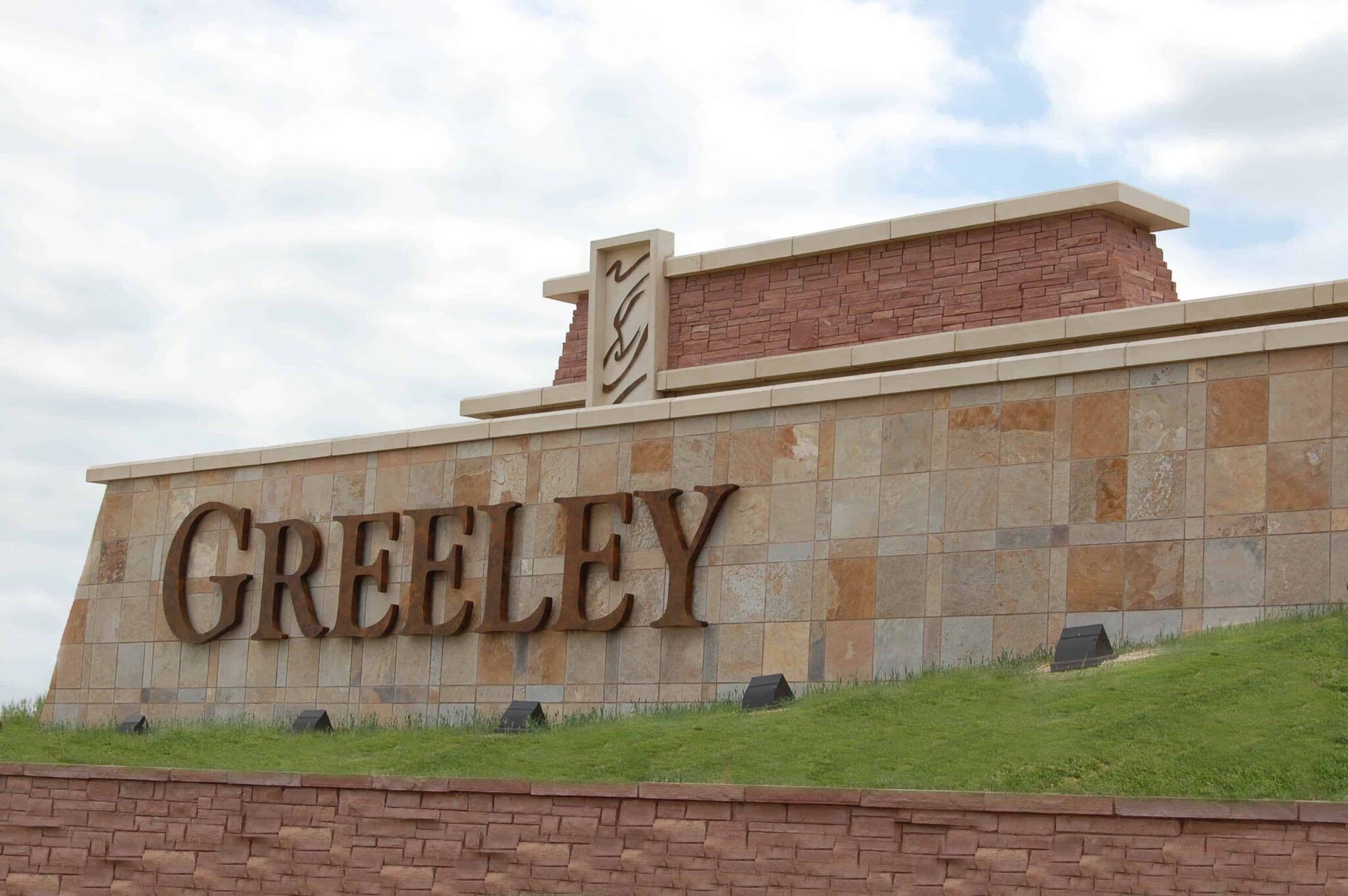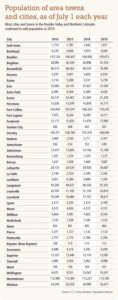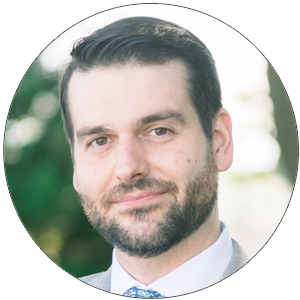Greeley population surpasses Boulder’s, which declines for third consecutive year

Greeley’s population increased to 108,649 in 2019, surpassing Boulder as that city marked its third consecutive year of population decline.
That’s according to the latest 2019 population estimates released at 12:01 a.m. Eastern Time Thursday by the U.S. Census Bureau. The estimates are as of July 1, 2019.

Greeley’s population increased 1.1% from the previous year, buoyed by new residential developments and — until recently — strong energy and agribusiness sectors.
SPONSORED CONTENT
22nd Annual Vintage Affair: A Community Gathering to Support Pathways
The 22nd Annual A Vintage Affair event, presented by Wilbur’s Total Beverage, benefits Pathways’ mission of providing expert medical and comfort care for individuals navigating the last months of life.
Roy Otto, Greeley city manager, said the city’s staff estimates that Greeley’s population actually surpassed 110,000 this year. He said the 1.1% growth rate is slower than what the city had seen in recent years, which he pegged at about 2% on average annually.
He expressed surprise that Greeley has surpassed Boulder in population, but noted that lower housing prices and cost of living have helped drive the city’s growth.
Greeley now ranks as the state’s 11th largest city, behind Denver, Colorado Springs, Aurora, Fort Collins, Lakewood, Thornton, Arvada, Westminster, Pueblo and Centennial. Boulder ranks as the state’s 12th largest city.
Otto said it’s unclear what effect the current economic downturn will have on Greeley’s population growth. The energy sector, for example, is weathering low prices due to the COVID-19 pandemic and a global price war between Saudi Arabia and Russia from March to mid-April..
“It’s hard to predict,” he said, noting that Greeley’s economy increasingly is tied to other communities in Northern Colorado, as Larimer and Weld counties embrace a common economic-development strategy.
Rich Werner, CEO of Upstate Colorado Economic Development, noted that his organization and other eco-devo groups soon will unveil targeted industry clusters for the region, identifying areas of strength for different communities.
“Economic situation notwithstanding, we’ve seen continued growth in Greeley and the region fueled by growth in the economy, as well as the [lower] cost of living,” Werner said. “If you look at the average home price in Boulder versus Greeley, you are afforded a greater and larger variety of housing.”
Werner said current economic conditions have displaced a significant number of workers in the energy sector, as well as in food services, retail and other industries.
“Particularly to the oil and gas industry, you’re going to have some pretty difficult short-term effects,” he said.
Greeley’s population growth in recent years contributes to opportunities for residents, he said.
“When you take the population numbers along with household income and see that continually increasing, that creates buying power that affords communities more opportunities in retail, commercial and entertainment type development,” he said. “That generates sales-tax revenue, which then allows communities to invest in more infrastructure.”
But he said “diversification of industries in Greeley and the region is paramount, especially in times like this.
“Having that diversification allows for a commodity-based economy, which Weld is, when you have ag, food processing and oil and gas … you’re going to see those fluctuations in price, which cause fluctuations in the economy,” he said. “Having that diversification allows for a greater resiliency.”
Boulder’s three years of decline
As Greeley continued its growth from July 2018 to July 2019, Boulder recorded its third year of population decline, losing 335 residents in that periodBoulder’s population has declined by 1,455 since 2016.
Boulder mayor Sam Weaver said the aging of the city’s population, as well as an expensive housing market, have contributed to the trend, as older individuals are more likely to be able to afford the city’s higher-priced housing.
“When a population is aging, you have fewer young people in the home, so that could be one factor,” he said. “As we get older and people retire and their kids move away, that’s one way you get population decrease.”
He noted that some mixed-use projects are beginning to come online in the city, such as the S’park development near 30th Street and Valmont Road, and The Rêve and Boulder Junction projects at 30th and Pearl streets.
“Obviously, we’re not building a ton of new units in Boulder,” he said. “We’re building some. I think as those mixed-use developments continue to come online … we might see those [population] numbers stabilize or reverse because people who are going to move into those mixed-use developments are going to be younger, typically.”
He said developers of those projects target a demographic that would include employees of expanding technology companies such as Google (Nasdaq: GOOGL) and Apple Inc. (Nasdaq: AAPL).
“I would guess, with what we see coming, as long as COVID doesn’t disrupt it significantly, I expect us to stabilize or grow slightly with the new housing units we’re bringing online,” he said.
He said that Boulder includes many areas that could support additional housing, including shopping centers such as Diagonal Plaza between 28th and 30th streets along the Diagonal Highway.
“There’s a lot of poorly used space in Boulder that could accommodate more people,” he said, mentioning the Alpine-Balsam area (the former Boulder Community Hospital) and Diagonal Plaza.
“There’s an ocean of parking that’s hardly used at all out there,” he said. “Our shopping centers have the potential to redevelop in a way that promotes mixed-use,” with housing added to some locations.
John Tayer, CEO of the Boulder Chamber, agreed with Weaver that Boulder’s population decline could be attributed to high housing costs and an aging population.

“To me, it speaks to the imperative that we continue to provide opportunities for more residential development that is attainable by the full spectrum of our workforce so that we can provide housing for a wider variety of individuals,” he said. “While it’s true that there are some exciting new redevelopment projects occurring, we as the Boulder Chamber are going to continue to advocate for the exploration of redevelopment opportunities in underutilized areas of our community that would create wonderful, vibrant, mixed-use subcommunities.”
He said that with three years of population decline, “It’s fair to assume that we’re seeing that aging of the population and that there are fewer young residents and families that are able to afford Boulder.”
Among other cities in the Boulder Valley and Northern Colorado:
- Berthoud continued its torrid growth pace, recording one-year growth of 15.5%, with the population reaching 9,094. The town’s population has increased 45% since 2016, propelled by new housing developments and proximity to other communities in Northern Colorado and the Boulder Valley.
- Fort Collins’ population reached 170,243, up 1.1% from July 2018. Fort Collins ranks as the state’s fourth largest city, behind Denver, Colorado Springs and Aurora.
- Louisville lost population for the second year in a row, dropping to 20,816 from a high of 21,185 in 2017.
- Longmont is just shy of the 100,000 population threshold at 97,261.
- Loveland’s population stands at 78,877, with a growth rate of 1.4% from 2018 to 2019.
- Westminster lost a few dozen residents between 2018 and 2019, with the population at 113,166, compared with 113,227 the year before.
- Superior also lost a small number of residents, with a population of 13,087, compared with 13,170 in 2018.
- Broomfield’s population increased by 1.6%, reaching 70,465, up from 69,324.
© 2020 BizWest Media LLC
Greeley’s population increased to 108,649 in 2019, surpassing Boulder as that city marked its third consecutive year of population decline.
That’s according to the latest 2019 population estimates released at 12:01 a.m. Eastern Time Thursday by the U.S. Census Bureau. The estimates are as of July 1, 2019.

Greeley’s population increased 1.1% from the previous year, buoyed by new residential developments and — until recently — strong energy and agribusiness sectors.
Roy Otto, Greeley city manager, said the city’s staff estimates that Greeley’s population actually surpassed 110,000 this year. He…
THIS ARTICLE IS FOR SUBSCRIBERS ONLY
Continue reading for less than $3 per week!
Get a month of award-winning local business news, trends and insights
Access award-winning content today!


